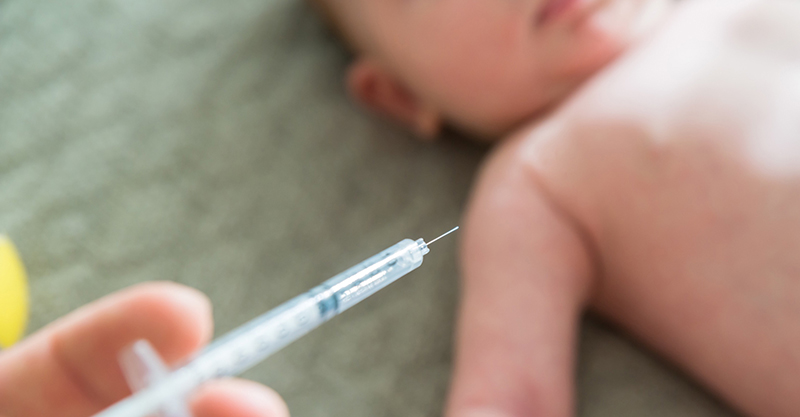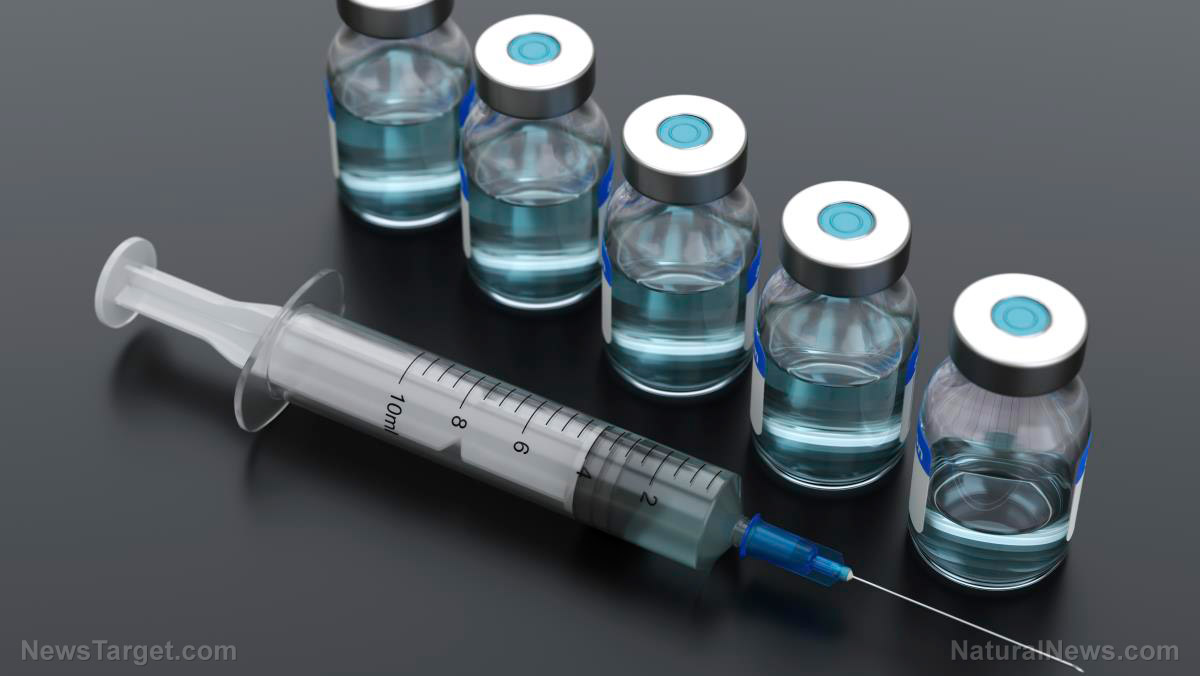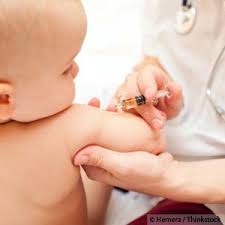1. Dr Judy Wileyman Report: Newsletter 209 Part 2 The Suppression of Scientific Debate on Vaccines in Australia
29 August 2018
As you read the information below please take note that the Australian Government has mandated with financial incentives 16 vaccines (~51 doses) for children for welfare benefits and access to early childhood education.
This has resulted in discriminatory social welfare policies, the banning of many healthy children from early childhood education and university students who cannot choose careers in health without receiving 10 – 16 vaccines.
These are vaccines that most adults have never used and they did not control these diseases in the Australian community by creating herd immunity.
Currently the Australian government is “educating” the population to believe that vaccine reactions are “rare” and that vaccines are thoroughly tested before they are approved in populations. This information is false and I have provided the evidence in my university PhD research.
The evidence is also provided in this 4 minute video clip of the recent law suit against the USDepartment of Health and Human Services (DHHS) that found that vaccine manufacturers are not testing vaccines with true inert placebos or for long-term cumulative health effects before they are marketed in the population.
In the 70’s and 80’s it was known that vaccines were causing thousands of injuries and deaths and this was resulting in many law suits. But these disabilities and illnesses were covered up when the US government passed a law in 1986 removing liability from pharmaceutical companies for any damage that is caused by a vaccine.
As Australia does not have a vaccine injury compensation scheme (unlike many other countries) the Australian government has health ministers that are informing the community that “vaccines do not have any side-effects” (Victorian Health Minister, Jillian Hennessy) and a Federal Health Minister, Greg Hunt who dismisses the risks of vaccines as an “anti-vaccination campaign“.
So how have we reached this point in Australia where politicians and journalists are being “educated” with false and misleading information about vaccines provided by lobby group activists and rogue doctors that are condoned in making false claims about university research in the mainstream media and on social media?
This is a result of the establishment of the powerful Australian Skeptics / SAVN and Friends of Science in Medicine lobby groups.
Prominent activists in this organisation have a loud voice with politicians, in the media, and on social media and they are providing false information about my university research on vaccines.
This includes Ken McLeod (a retired air traffic controller), Dr. John Cunningham (spinal medicine – not vaccination) and Dr. Rachael Dunlop (PhD in heart research – not vaccination).
The Public Health Association of Australia (PHAA) that runs the industry sponsored Australian Immunisation Conference, supports these lobby groups to promote false information about vaccines.
This includes PHAA president, University of Wollongong, Professor Heather Yeatman(Nutrition – not vaccination) who has been permitted to advertise the government’s false claims about vaccines on the University of Wollongong website – without ever having specialised in vaccination or infectious diseases.
How did the Australian Skeptics and its offshoot lobby groups come into being?
The Establishment of the Australian Skeptics in Australia
In July 1980 prominent Australian, Dick Smith, collaborated with renowned skeptic, James Randi, founder of the US Committee of Skeptical Inquiry (an organisation that promotes corporate interests) to set up the Australian Skeptics lobby group.
Dick Smith also funded the first full page advertisement for the Stop the Australian Vaccination Network (SAVN) – an offshoot of the Australian Skeptics – in the Australian Newspaper in 2008/09.
This advert derided the Australian Vaccination Network – a grassroots citizen group advocating for choice in vaccination.
At this time I was presenting my university research at the Australian National Health Promotion Conference in Perth (2009), in the PHAA newsletter (2009) and at public forums with the Australian Vaccination Network.
The advertisement funded by Dick Smith was written by the Australian Skeptic Committee and future adverts were funded by the SAVN page subscriber and other donors (Eran Segrev,Australian Skeptic president 2012).
SAVN was set up as an anonymous facebook page in 2009 called Stop the AVN (SAVN) Facebook Friends with the only contact being “The Young Australian Skeptics”.
This anonymity enabled the SAVN facebook friends to use abuse and ridicule to defame professionals and academics who presented the risks of vaccines – with impunity.
Whilst the funding arracgements for the Australian Skeptics/SAVN lobby group are hidden, their agenda that focuses only on infectious diseases that are claimed to be prevented by a vaccine provides evidence that they are not a true grassroots citizen group.
This is because they are actively suppressing and ignoring the skyrocketing chronic illness in children, including autism, that is increasing with the expansion of the vaccination schedule
This is further evidence that their agenda is not solely about the “health” of children as would be the case for a true grassroots movement.
This is an example of astroturfing and the spreading of propaganda.
In 2013 Richard Di Natale, leader of the Greens, defended the disreputatble activities of many SAVN activists in the Australian Federal Parliament – with false information about this lobby group.
The push for the No Jab No Pay social welfare policy was driven by the Australian Skeptics/SAVN activists and the Friends of Science in Medicine in the News Corp (Murdoch) media and on Mia Freedman’s MamaMia blog,
It was approved by Scott Morrison, the Social Services Minister in 2015 for implementation in January 2016 based on false and misleading information.
Here is a 5 minute comment on this web of conflicts of interest of lobby group activities that is being described to the Washington Board of Health.
Please also watch this 4 min clip describing the history of the removal of liability from big pharma for any harm caused by vaccines – The US Loses Landmark Vaccine Law Suit.
Judy Wilyman PhD
Bachelor of Science, University of NSW
Diploma of Education (Science), University of Wollongong
Master of Science (Population Health), Faculty of Health Sciences, University of Wollongong.
PhD in The Science and Politics of the Australian Government’s Vaccination Program, UOW School of Humanities and Social Inquiry.
2. Robert Kennedy’s World Mercury Project: Study Claims Tdap Vaccine in Pregnancy Doesn’t Cause Autism—Is That True Given The Facts?
By Brian S. Hooker, Ph.D., P.E. and the World Mercury Project Team
Since 2012, Tetanus, diphtheria and pertussis (Tdap) vaccine has been recommended for pregnant women during the third trimester of each pregnancy to provide protection to the newborn despite the glaring lack of safety data.
The study, “Prenatal Tetanus, Diphtheria, Acellular Pertussis Vaccination and Autism Spectrum Disorder (ASD)” by Kaiser Permanente was published this week in the journal Pediatrics, the official journal of the American Academy of Pediatrics (AAP).
The study touted that the Tdap vaccine during pregnancy doesn’t cause autism.
Mainstream media copied the journal’s press release and wrote stories with vigor not questioning how the study was done, who paid for it nor the results.
Brian Hooker and the World Mercury Project team dug deeper to find the real answers for you and your loved ones in order to evaluate the vaccine’s risks and benefits during pregnancy.

- In general, the minimum and average follow-up times were much too low to detect autism diagnoses.
The authors use a cut-off age of 1 year based on the minimum age at which an Autism Diagnostic Observation Schedule (ADOS) test may be administered.
Instead, they should have used the average age of diagnosis within the sampling (which is most likely between 42 and 48 months of age).
Based on this, they could have missed the majority of the cases and based on their range of follow-up times (1.2 to 6.5 years) probably missed up to 50% of the cases. - The authors state that the minimum enrollment time for a child in the system was 90 days (three months).
If a child who received a diagnosis of autism did not receive it within that time period in network, they would be considered a non-autistic control.
This inherently biases the study towards the “null hypothesis” meaning that they would not see an association. - The mean follow-up period for the unvaccinated group was 4.44 years as opposed to 3.85 years for the vaccinated group.
In other words, the unvaccinated group had an additional six months of follow-up.
THIS IS A FATAL FLAW OF THE STUDY.
The mean follow-up period for the unvaccinated group (if follow-up occurred from birth, which was true for the majority of patients in this study) extended BEYOND the average age of diagnosis of autism, whereas the mean follow-up period for the vaccinated group did not.
One would expect a very large influx of autism diagnoses in this six-month window, regardless of vaccination status. - The covariates do not include vaccination status of the infant/child during the follow-up period.
If the study is designed to consider prenatal vaccines, why does it not consider post-natal vaccines as well? - The covariates include the year of birth of the patient and in the final analysis, the comparison is based on “patient-year” versus autism diagnosis and not “patient” versus autism diagnosis.
This is a common error called “multicollinearity” where the age of the patient is used as a multiple in the final analysis.
This confounds the analysis as year of birth definitely correlates with ASD rates (i.e. older children are old enough to receive a diagnosis).
This flaw also nullifies the analysis. - The authors possess an alarming conflict of interest specifically around the Tdap vaccine (Boostrix) in pregnancy.
Three of the authors, including the lead author, Becerra-Culqui received funding directly from GSK (the manufacturer of Boostrix) for a prior study of the vaccine during pregnancy. - The study was funded in its entirety by Kaiser Permanente Southern California.
This precludes the availability of the data set used for the study and thus independent verification of the results.
Brian Hooker emailed Dr. Becerra-Culqui directly to request the data set.
She stated that it was not available.
There are two DTaP products used during pregnancy Adacel and Boostrix.
According to the manufacturer’s package insert for each, safety and effectiveness have not been established in pregnancy women:
- Adacel Safety and effectiveness of Adacel vaccine have not been established in pregnant women. Pregnancy Surveillance Registry: contact Sanofi Pasteur Inc. at 1-800-822-2463 (1-800-VACCINE).
- Boostrix Safety and effectiveness of BOOSTRIX have not been established in pregnant women. Register women who receive BOOSTRIX while pregnant in the pregnancy registry by calling 1-888-452-9622.
Mainstream media missed the ball on this study.
Perhaps they should examine the motivation behind studies like this and call into question scientific articles where conflicts are so blatantly inherent.
When they fail to do their jobs and ask the right questions, consumers lose.
Note that in a pull-out section, “What This Study Adds,” the journal states: “No study to our knowledge has been published examining the risk of ASD after prenatal exposure to the Tdap vaccine.”
WMP believes that this is a startling admission pointing to our poor vaccine safety program in America and wonders given the clear links of Maternal Immune Activation (MIA) and autism why there wasn’t a study done BEFORE the recommendation to begin giving this vaccine to pregnant women?
3. VaccineDamageNews: A groundbreaking study CONFIRMS that a common vaccine additive is linked to autism-like behavior
It’s no secret that the aluminum adjuvants used to make vaccines more potent is toxic; so injecting metal into your body usually isn’t the best of ideas, now is it?
But few have dared to go against the grain and take a deeper look at just how bad aluminum really is when its used in vaccine preparations.
While it’s been proven to be neurotoxic, for some reason, Big Pharma has continued to get away with including aluminum as a vaccine ingredient for years — and no one has dared to speak out about the very real threat it poses.
But now, research from the University of British Columbia in Vancouver, Canada is pointing the finger at aluminum — and you’ll never guess what it’s been linked to: Autism.
Despite the mainstream media’s attempts at slandering anyone and any science that even hints at a link between vaccines and autism as “anti-science” or whatever the latest insult du jour may be, it turns out that denialism isn’t really science, either.
Ironically enough, refusing to acknowledge the threat posed by neurotoxic vaccine ingredients is about as anti-science as you can get.
How long will it take for Big Medicine and their media shills to try to bury this study?

Aluminum and “autism-like” behavior
Scientists at the University of British Columbia recently conducted studies of how aluminum affected behavior in young rats.
What they found was that rats exposed to aluminum in early life exhibited social symptoms similar to autism; specifically, a decreased social interest when compared to normal, non-exposed rats of the same age.
In their conclusion, the team stated, “This is the first experimental study, to our knowledge, to demonstrate that aluminum adjuvants can impair social behavior if applied in the early period of postnatal development.”
While the researchers caution that there is still much to learn about potential links between aluminum and autism in humans, their findings are still the first of their kind — and certainly, highlight the fact that aluminum adjuvants clearly have not been adequately studied.
Cannabis remains illegal due to “insufficient evidence” to support it’s medicinal benefits — yet we are blindly inoculating our children with a known neurotoxic substance, with no real understanding of its effects?
In their paper, the team also describes what inspired their research: The discovery of a correlation between the total number of aluminum adjuvants administered to kids via vaccines and spiking rates of autism.
“These correlations satisfied eight out of nine Hill criteria for causality.
Experimental studies have demonstrated a range of behavioral abnormalities in young mice after postnatal exposure to aluminium,” the scientists add.
Other concerns about aluminum in vaccines
As World Mercury Project notes, aluminum adjuvants have been linked to an array of health issues.
These include neuromuscular and multiple organ system dysfunctions, including macrophagic myofasciitis (MMF) and autoimmune/inflammatory syndrome induced by adjuvants (ASIA), along with effects on the central nervous system and the immune system.
The neurotoxic metal has also been linked to Alzheimer’s disease.
Moreover, WMP explains that “almost 100 percent of the intramuscularly injected aluminum (as in vaccine adjuvants) is absorbed into the systemic circulation and travels to different sites in the body such as the brain, joints and the spleen where it accumulates and is retained for years post-vaccination.
All of this raises the question: Why is aluminum really in vaccines, if it’s clearly not for our health?
Learn more about what’s hiding in those inoculations at Vaccines.news.
Sources for this article include:
Article By Vicki Batts
